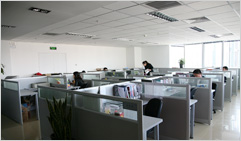Chinese Opera
 There are over 30 different styles of Chinese opera, depending on local traits and accents in the regions over 800 years. Chinese opera has been encouraged by court officials and emperors and has become a traditional art form. During the Qing Dynasty (1644 - 1911), Chinese opera became fashionable among ordinary people. Performances were watched in tearooms, restaurants, and even around makeshift stages. The music that accompanies the performance uses traditional instruments such as gongs, the Erhu and the lute. Dialogues also accompany the performance, usually high literature which aided the development of literary styles such as Zaiu from the Yuan dynasty. Many of the features that characterize modern Chinese Opera developed in northern China, particularly Shanxi and Gansu Provinces.
There are over 30 different styles of Chinese opera, depending on local traits and accents in the regions over 800 years. Chinese opera has been encouraged by court officials and emperors and has become a traditional art form. During the Qing Dynasty (1644 - 1911), Chinese opera became fashionable among ordinary people. Performances were watched in tearooms, restaurants, and even around makeshift stages. The music that accompanies the performance uses traditional instruments such as gongs, the Erhu and the lute. Dialogues also accompany the performance, usually high literature which aided the development of literary styles such as Zaiu from the Yuan dynasty. Many of the features that characterize modern Chinese Opera developed in northern China, particularly Shanxi and Gansu Provinces.  Chinese opera is thought to have evolved from various cultural sources, such as folk songs, dances, dialectical music and antimasque, or masked performance. Chinese opera makeup is particularly fascinating and rich in meaning. In China, opera has traditionally been the main source of theatrical drama; it is the Chinese counterpart to what one in the West terms "theatre". Yet the English language notion of opera does not fully capture the true essence of opera in China, as anyone even vaguely familar with Chinese opera would agree. In fact, the term, "Chinese opera", is itself not a bad jumping off point for talking about the phenomenon of opera in China, since the term suggests that there is something about opera in China that sets it apart from the Western notion of opera.
Chinese opera is thought to have evolved from various cultural sources, such as folk songs, dances, dialectical music and antimasque, or masked performance. Chinese opera makeup is particularly fascinating and rich in meaning. In China, opera has traditionally been the main source of theatrical drama; it is the Chinese counterpart to what one in the West terms "theatre". Yet the English language notion of opera does not fully capture the true essence of opera in China, as anyone even vaguely familar with Chinese opera would agree. In fact, the term, "Chinese opera", is itself not a bad jumping off point for talking about the phenomenon of opera in China, since the term suggests that there is something about opera in China that sets it apart from the Western notion of opera.My Questions *We welcome and appreciate your questions & reviews



